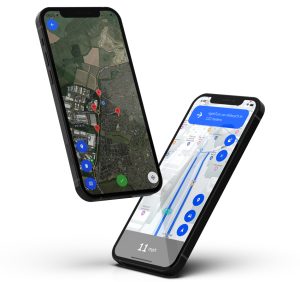WHEN TO CHANGE GEAR IN A MANUAL CAR
To become really good at something takes a lot of time, practice and dedication. Learning to drive is no different. The knowledge, skills, judgment, behaviour, confidence and understanding are necessary to drive a car safely take time to develop. When it comes to driving, experience is key. It’s important that you practise on as many different roads and routes as possible – in different traffic and weather conditions – so that you get as broad an experience as possible.
And while you’re having your driving lessons (with your instructor or when learning to drive with friends or family), it’s worth thinking about getting familiar with the area around your Driving Test Centre and practising driving test routes as often as possible as this can significantly increase your chances of passing your driving test. You can download your local Driving Test Routes here.
One of the most difficult parts of learning to drive in a manual car is getting to grips with gear changes. Especially when you’re experiencing what it’s like to drive in the real world, for example, in busy town and city centres (when you constantly need to keep up with the different speeds at which you and all the cars around you drive), not just on the way home from school or the grocery store with your Mum or Dad… Good news is that once you get a feel for when you need to change up or down a gear (and which gear to select), being able to change gears smoothly will become second nature.
Here’s a quick guide that explains the basics of this fundamental part of driving a manual car.
Why do you need to change gears
Gear changes are required when you need the power to move your car from being at a standstill, build up its speed and keep it moving. To get the best out of your engine when driving in different road, traffic and weather conditions, you need to be able to change to the most appropriate gear at the right time.
 When to change specific gears can vary from car to car and whether you’re on a flat road, uphill or downhill and how much weight is in your car. As a general rule, change UP through the gears as the speed of your car increases and DOWN when you need more power from the engine (for example, when you’re going up or down hills or pulling away at low speed).
When to change specific gears can vary from car to car and whether you’re on a flat road, uphill or downhill and how much weight is in your car. As a general rule, change UP through the gears as the speed of your car increases and DOWN when you need more power from the engine (for example, when you’re going up or down hills or pulling away at low speed).
Listen to your engine
The best way to determine when to change gears in a manual car is to listen to the sound of the engine. The more you practise, the more familiar with it you’ll become. You’ll eventually be able to recognise the appropriate level of sound of your car’s engine at which to change the gear. When it sounds like it’s starting to work too hard or it’s starting to make a loud roaring sound, it’s time to change up a gear. If the engine is starting to struggle and is making a lower sound after you’ve slowed down, then you need to change down a gear.
What gear for which speed
Car manufacturers specify an optimal range of speeds for each gear. As this will vary considerably between cars, below speed range suggestions are only approximate and should only be used as a general guide. Please refer to your vehicle handbook for details.
When to change up gears
When your car is at a standstill, you will need 1st gear (which is the most powerful gear) to move off. As you build up speed and momentum with the accelerator pedal, there comes a point when 1st gear can’t go any faster (and you can hear the engine sound get louder). This is the moment when you need to change up gears to match the engine speed to the speed of your car.
The procedure for changing up through the gears is always the same. To change from 1st to 2nd, you’ll need to ease off the accelerator, press the clutch pedal all the way to the floor, move the gear lever into 2nd gear, slowly lift your foot off the clutch pedal and, at the same time, press the accelerator pedal gently and gradually to increase the engine speed. Avoid over-revving the engine as this uses up much more fuel and can cause damage to the car.
Low gears are best for steep hills as they have the most power. If you’re driving uphill or have extra weight in your car, make sure that you speed up a little extra first and build up momentum before changing up gears or your car will slow down and possibly stall.
When to change down gears
You’ll normally have to change down gears if you have slowed down and the gear you’re in doesn’t give you enough power to drive at that lower speed. If you don’t change down into the correct gear as you slow down, the car will start to stutter and jolt as you lift your foot off the clutch pedal. You’ll also need to change to a lower gear if you’re going uphill in too high a gear and your engine starts to struggle to give enough power and when you need to increase the effect of the engine braking, for example, when you’re on a long downhill gradient.
As a general rule, you should use the foot brake to reduce the speed of your car before changing down to the most appropriate gear for the lower speed.
Make sure you’re prepared for what’s ahead in the right gear. If, for example, you’re about to turn or go onto a roundabout, slow down and change down gear before.
What is block gear changing
It’s not necessary to use the gears in exact order when changing up and down the gearbox. Where appropriate, you can miss out a gear (or multiple gears) depending on your current or intended speed. This is called block (or selective) gear changing. It basically means skipping gears, for example, you can change down from 5th or 4th gear to 2nd gear.
Let’s say you’re driving along the main road at 60mph in 5th gear and you intend to turn left into a side road…
You will usually be able to do so without having to stop and – more often than not – you will be using 2nd gear to do this.
As you approach a junction, reduce your speed. To do this, you need to release the accelerator pedal and brake until you are going slowly enough to take the junction safely. When you have slowed down to a safe speed for the turn, select the most appropriate gear for that speed. The best gear for the job in most cars will be 2nd. Move the gear lever into the neutral position and then directly to 2nd gear.
The benefits of block gear changing include:
- reduced fuel consumption
- reduced overall wear and tear on the gearbox and clutch
- less work for you
- more time to concentrate on the road ahead
- more steering control in emergencies
Driving Test Routes
download your local Driving Test Routes here
One of the best learner-driver tips to pass your practical driving test is to get familiar with your local driving test routes and drive them as often as possible during your lessons with your instructor and when practising with friends or family before taking the test.
It can be nerve-wracking driving in an area that you’re unfamiliar with and not knowing what to expect around the next turn, especially during your practical driving test, so make sure that you’ve done everything possible to get ready.
Get your local Driving test routes here

